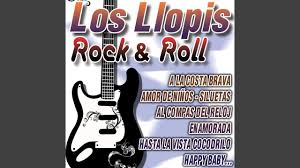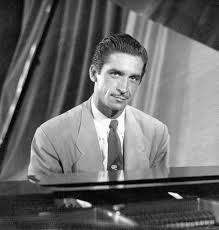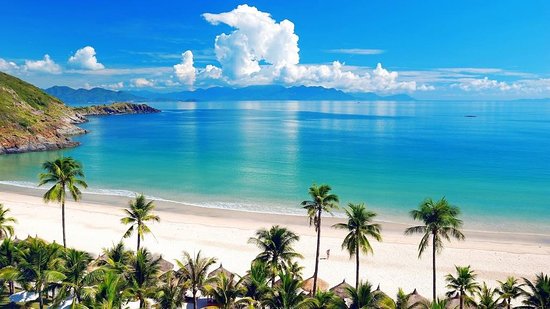Frank Llopis fue un destacado Compositor, arreglista, guitarrista, director, y quien es uno de los precursores del Rock en Español. Después de graduarse de ingeniero químico en la Universidad de Cornell, Estados Unidos, a finales de la década de 1940, regresó a Cuba y comenzó a trabajar en su profesión. Pero su verdadera pasión era la música.
Muy pronto se unió al también destacado músico cubano Felipe Dulzaides, Pianista, arreglista y compositor para formar el Cuarteto Llopis-Dulzaides. En 1948 Felipe y los Llópiz-Dulzaides, realizan una gira por América Latina y Estados Unidos. Este cuarteto, que hacía una música de carácter comercial, constituyó uno de los primeros grupos que incursionó en el rock y pop, en el cual Felipe tocaba el piano y el acordeón. El grupo estaba integrado por Dulzaides, los hermanos Frank y Manolo (Ñolo) Llopis y el saxofonista Leo Torres.
El cuarteto se especializó en la interpretación de boleros. Eran los primeros días de la televisión en Cuba.
En 1956, Dulzaides decide abandonar el grupo para dedicarse a otro tipo de música que lo apasionaba: el jazz. En ese momento, el cuarteto cambia de nombre a ‘Los Llopis’ y el cantante Manolo Vega se integra al mismo. La presentación oficial del grupo se hizo en el Show de las Siete y 30 de Radio Progreso, en febrero de 1957.
Graban sus primeros álbumes para el sello Discos MECA. Su particular interpretación del bolero “No pidas más perdón” fue un éxito espectacular. Esto se debió, precisamente, al sonido peculiar de la guitarra hawaiana que Frank Llopis tocaba magistralmente.
Sus apariciones en programas de la televisión cubana como ‘El Álbum Phillips’ se hicieron habituales. Posteriormente, Frank se dedicó a hacer arreglos y traducciones de grandes estrellas del rock como Elvis Presley y Bill Haley.
El grupo cobró nueva fuerza a finales de 1958 con grandes éxitos en Cuba y México con las versiones al español de reconocidos temas como ‘No seas cruel’, ‘Estremécete’ y ‘Al compás del reloj’, a finales de 1958. En 1959 un empresario español los lleva a Madrid, la capital de España, para presentar al grupo en la Sala Florida. En 1960, todavía en España, graban en una sola mañana 12 temas para el sello Zafiro.
Es cuando Frank Llopis, que fungía como director del grupo, decide no regresar a Cuba, donde la revolución popular de 1959 se había radicalizado al punto de suprimir importantes libertades públicas, confiscar propiedades privadas y controlar los medios de comunicación social. En 1964, el grupo llega a Perú, donde graba varios discos bajo el sello Virrey, y hace presentaciones públicas.
FELIPE DULZAIDES y LOS ARMONICOS.
Felipe Dulzaides Badía, Pianista, arreglista y compositor. Fue uno de los impulsores del jazz en Cuba, su grupo fue una cantera de la que salieron muchos de los intérpretes del género.
Su influencia como intérprete y arreglista la recibió del pianista inglés George Shearing, a quién conoció en Chicago, Estados Unidos: “Me encantó el timbre, me enamoré de su forma de tocar, de la manera en que armonizaba y lo difícil que era lo que él hacía parecer fácil, siempre tocando detrás del ritmo, no junto a él.” Ese timbre fue el que hizo posible el sello sonoro de Los Armónicos, en el cual utilizaba al unisono piano, vibráfono y guitarra.
Cuando Felipe se separa de los Llópiz-Dulzaides funda ‘Los Armónicos’, integrado por Pablo Cano, guitarra; Doris de la Torre, cantante; Lucas de la Guardia, voz, y el argentino Luis Ortellano, trompeta. Este grupo se presenta en los cabarets Sans-Souci, Montmartre, Salón Panorámico del Cabaret Tropicana, Hotel Comodoro y Hotel Nacional así como en diversos programas televisivos de la época.
Este cuarteto es uno de los antecesores del boom de cuartetos que vendría en la década del 60. En sus inicios era un cuarteto vocal-instrumental, con el tiempo abandonó el formato vocal, se limitó a un solo cantante para finalmente convertirse en un grupo totalmente instrumental. Los Armónicos alternaron con el baterista de jazz Philly Joe Jones, el cantante Matt Denis y los pianistas Frank Emilio y Bebo Valdés, entre otros.
En la década de los 60 Los Armónicos estuvieron compuestos por una nueva generación conviertiéndose así en un grupo escuela hasta mediados de los 80 en que la carrera de Felipe se vio interrumpida debido a una enfermedad. Estos nuevos Armónicos poseían un repertorio variado internacional que contaba con un gran éxito de audiencia joven. En muchas ocasiones se realizaban descargas en las que participaron músicos cubanos y extranjeros como el pianista Gonzalo Rubalcaba, el trompeta Jorge Varona, el flautista canadiense Moe Koffman y el baterista norteamericano Billy Cobham entre muchos otros. Dulzaides fue también uno de los fundadores del Festival de Jazz Plaza en el cual se presentó regularmente.
Junto a Armando Romeu (padre), Gustavo Más, Luis Escalante, el guitarrista Isidro Pérez (Isito) y otros, Felipe fue uno de los primeros en cultivar el jazz en Cuba.
De sus cualidades como músico, expresa Leonardo Acosta: “Uno de los secretos de Felipe es su innato oido musical y su entrenamiento armónico, unidos a una memoria fenomenal y su capacidad para tocar en cualquier tono los números más complejos desde el punto de vista armónico, lo cual a su vez requiere un don complementario del que rara vez se habla: una facilidad innata para la modulación, requisito doblemente necesario para la improvisación jazzística.
Dentro de su repertorio internacional tenía temas de Monk, Parker, así como de Tom Jobim, John Lennon y Paul McCartney. La grandeza de este músico radicaba en su formación autodidacta, reconociendo él mismo, que no leía mucha música. Su discografía consta de 22 discos, los cuales no constituyen una muestra de su carrera como jazzista.
Como arreglista, a finales de los 50, Dulzaides realizó arreglos para el famoso disco de La Lupe ‘Con el Diablo en el cuerpo’ así como para el bolerista Fernando Álvarez.
Felipe muere en la Habana en 1991. Por otro lado Frank Llopez falleció en Irvine, California el 14 de junio de 2013 a la edad de 97 años. .
Frank Llopis was an outstanding Composer, arranger, guitarist, director, and who is one of the forerunners of Rock en Español. After graduating as a chemical engineer from Cornell University, United States, in the late 1940s, he returned to Cuba and began working in his profession. But his true passion was music.
Very soon he joined the also outstanding Cuban musician Felipe Dulzaides, Pianist, arranger, and composer to form the Llopis-Dulzaides Quartet. In 1948 Felipe and the Llópiz-Dulzaides made a tour of Latin America and the United States. This quartet, which made commercial music, was one of the first groups to venture into rock and pop, in which Felipe played the piano and accordion. The group was made up of Dulzaides, brothers Frank and Manolo (Ñolo) Llopis, and saxophonist Leo Torres.
The quartet specialized in the interpretation of boleros. It was the first days of television in Cuba.
In 1956, Dulzaides decided to leave the group to dedicate himself to another type of music that he was passionate about: El jazz. At that time, the quartet changed its name to ‘Los Llopis’ and the singer Manolo Vega joined it. The official presentation of the group was made at the Radio Progreso Show at 7:30 in February 1957.
They record their first albums for the Discos MECA label. His particular interpretation of the bolero “Do not ask for more forgiveness” was a spectacular success. This was precisely due to the peculiar sound of the Hawaiian guitar that Frank Llopis played masterfully.
His appearances on Cuban television programs like ‘El Álbum Phillips’ became habitual. Later, Frank dedicated himself to making arrangements and translations of great rock stars such as Elvis Presley and Bill Haley.
The group gained new strength at the end of 1958 with great successes in Cuba and Mexico with the Spanish versions of well-known songs such as ‘Don’t be cruel’, ‘Estremécete’ and ‘Al compás del Reloj’, in late 1958. In 1959 a Spanish businessman takes them to Madrid, the capital of Spain, to present the group in the Florida Room. In 1960, still in Spain, they recorded 12 songs for the Zafiro label in a single morning.
It was when Frank Llopis, who was the group’s director, decided not to return to Cuba, where the popular revolution of 1959 had radicalized to the point of suppressing important public liberties, confiscating private property and controlling the media. In 1964, the group arrives in Peru, where it records several discs under the Virrey label, and makes public presentations.
FELIPE DULZAIDES and LOS ARMONICOS.
Felipe Dulzaides Badía, Pianist, arranger, and composer. He was one of the promoters of jazz in Cuba, his group was a quarry from which many of the interpreters of the genre came out.
His influence as a performer and arranger came from the English pianist George Shearing, whom he met in Chicago, United States: “I loved the timbre, I fell in love with its playing, the way it harmonized and how difficult it was He made it sound easy, always playing behind the beat, not next to him. ” That timbre was what made possible the sound seal of Los Armónicos, in which he used piano, vibraphone and guitar in unison.
When Felipe separated from the Llópiz-Dulzaides he founded ‘Los Armónicos’, made up of Pablo Cano, guitar; Doris de la Torre, singer; Lucas de la Guardia, voice, and the Argentine Luis Ortellano, trumpet. This group appears in the cabarets Sans-Souci, Montmartre, Panoramic Hall of the Tropicana Cabaret, Hotel Comodoro and Hotel Nacional as well as in various television programs of the time.
This quartet is one of the predecessors of the quartets boom that would come in the 60s. In its beginnings it was a vocal-instrumental quartet, over time it abandoned the vocal format, limited itself to a single singer, and finally became a fully-fledged group. instrumental. The Harmonics alternated with jazz drummer Philly Joe Jones, singer Matt Denis, and pianists Frank Emilio and Bebo Valdés, among others.
In the 1960s Los Armónicos was made up of a new generation, thus becoming a school group until the mid-1980s when Felipe’s career was interrupted due to illness. These new Harmonics had a varied international repertoire that had great success with a young audience. On many occasions, downloads were made in which Cuban and foreign musicians such as the pianist Gonzalo Rubalcaba, the trumpet Jorge Varona, the Canadian flutist Moe Koffman and the American drummer Billy Cobham among many others participated. Dulzaides was also one of the founders of the Jazz Plaza Festival in which he performed regularly.
Along with Armando Romeu (father), Gustavo Más, Luis Escalante, guitarist Isidro Pérez (Isito) and others, Felipe was one of the first to cultivate jazz in Cuba.
Of his qualities as a musician, Leonardo Acosta expresses: “One of Felipe’s secrets is his innate musical ear and his harmonic training, together with a phenomenal memory and his ability to play in any tone the most complex numbers from the harmonic point of view, which in turn requires a complimentary gift that is rarely spoken of: an innate facility for modulation, a doubly necessary requirement for jazz improvisation.
Within his international repertoire, he had songs by Monk, Parker, as well as Tom Jobim, John Lennon, and Paul McCartney. The greatness of this musician lay in his self-taught training, admitting himself that he did not read much music. His discography consists of 22 discs, which do not constitute a sample of his career as a jazz player.
As an arranger, in the late 1950s, Dulzaides made arrangements for La Lupe’s famous album ‘Con el Diablo en el Cuerpo’ as well as for bolero singer Fernando Álvarez.
Felipe died in Havana in 1991. On the other hand, Frank Llopis died in Irvine, California on June 14, 2013, at the age of 97 years.
Agencies/ Contacto Mag./ Maria A. Vizcaino/ Internet Photos/ YouTube/ Arnoldo Varona/ www.TheCubanHistory.com
THE CUBAN HISTORY, HOLLYWOOD.











